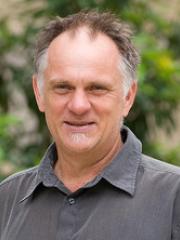Professor Rod Fensham

Researcher biography
Most of my research is quantitative field ecology in the big natural playground of Queensland. I do ecology because I want to help avoid extinction and better manage Australia's natural resources, and also because discovery is extremely enjoyable. In 2010 I am working with co-workers on editing of Ludwig Leichhardt's diaries, woody vegetation dynamics, artesian desert springs, grazing dynamics in the arid zone, the role of fire in savannas and establishing a large project to facilitate ecosystem restoration within an emerging carbon economy. I have far more ideas than capacity to fulfil them, so welcome committed post-grads to discuss potential projects.
Research themes:
Artesian springs
Artesian springs are isolated oases in a sea of arid-lands containing weird and wonderful endemic creatures including snails, crustacea, plants and fish. The springs provide a focus for research relating to their hydrological function, conservation, optimum management and biogeographic history.
Woody vegetation dynamics
The processes that drive changes in woody plant abundance, including drought-induced dieback, fire, woody plant expansion, aka woody thickening, invasive scrub, woody plant encroachment have been a focus of attention. The issue has been addressed through systematic survey, field and nursery experiments, physiological studies and with systematic use of the historic record, including aerial photography, old survey charts and explorers notes.
Arid-zone grazing
A review of water-remote grazing effects prompted a program of work that will utilise long–term grazing exclosures, water-remote gradients and the ecology of rare plants to build a deeper understanding of grazing in arid landscapes.
Integrating the carbon economy into conservation
This arena provides a broad scope to examine the dynamics of carbon in terrestrial ecosystems, extend our understanding of biodiversity in Australia, and to understand the trade-offs between managing for carbon and for biodiversity
